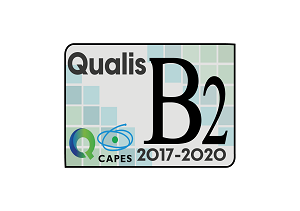Choral singing in the new normality
DOI:
https://doi.org/10.47519/eiaerh.v8.2022.ID421Keywords:
Choir singing teaching, Composition for coral, Artistic researchAbstract
The covid-19 pandemic significantly impacted the choirs, however, the use of digital technologies made it possible to continue artistic and social activities. This article identifies the challenges the scenic choir UFMA CANTa - CORAL CÊNICO encountered in this new modality and identifies the adaptations necessary for its musical performance on the various digital platforms available. The methodology adopted was Artistic Research (COESSENS; CRISPIN; DOUGLAS, 2009), combined with digital ethnography, conducting discourse analysis, choral composition for the GMeet environment, planning and reorganization of rehearsal strategies for the play, recording each stage, performance, and self-assessment followed by an analysis of the results. Through the data collected and the artistic results achieved, were considered the importance of a multidisciplinary team and the need for more knowledge about musical acoustics and creative practices for the new conductors.
Downloads
References
BIANCHI, F.; MANZO, V. J. (ed.). Environmental Sound Artists: In their own words. New York: Oxford University Press, 2016.
COESSENS, K.; CRISPIN, D.; DOUGLAS, A. The artistic turn: a manifesto. Leuven, Bélgica: Leuven University Press, 2009.
DECLARAÇÃO de bolonha. 1999. Disponível em: http://www.abc.org.br/wp-content/uploads/2009/09/www.ufabc_.edu_.br_images_stories_pdfs_declaracaodebolonhaportugues.pdf. Acesso em: 09 mar. 2022.
EREN, H. C.; ÖZTUG, E. K. The Implementation of Virtual Choir Recordings during Distance Learning. Cypriot Journal of Educational Sciences, v. 15, n. 5, p. 1117-1127, 2020. Disponível em: https://eric.ed.gov/?id=EJ1274034. Acesso em: 09 set. 2021.
FONTERRADA, M. T. O. O Lobo no Labirinto: Uma incursão à obra de Murray Schafer. São Paulo: UNESP, 2004.
GRUSHKA, K. et al. A Virtual Choir Ecology and the Zoom-machinic: Visual Technologies as a Panacea for Social Isolation. Video Journal of Education and Pedagogy, v. 5, n. 1, p. 1-16, 2021. Disponível em: https://brill.com/view/journals/vjep/5/1/article-p1_8.xml. Acesso em: 25 fev. 2022.
HORST, H. A.; MILLER, D. (ed.). Digital anthropology. New York: Berg, 2012.
Published
How to Cite
Issue
Section
License
Copyright (c) 2022 Revista Hipótese

This work is licensed under a Creative Commons Attribution 4.0 International License.








